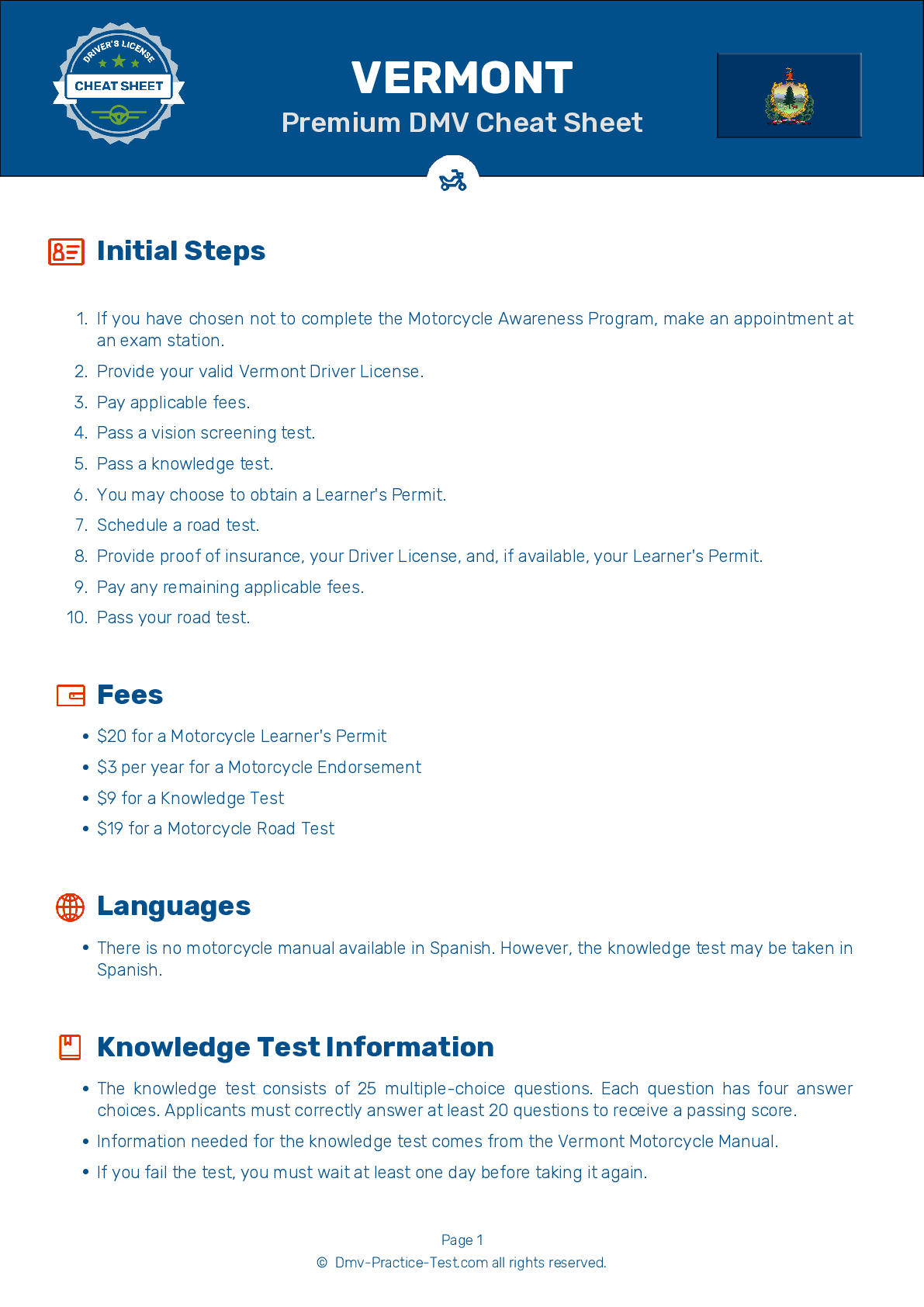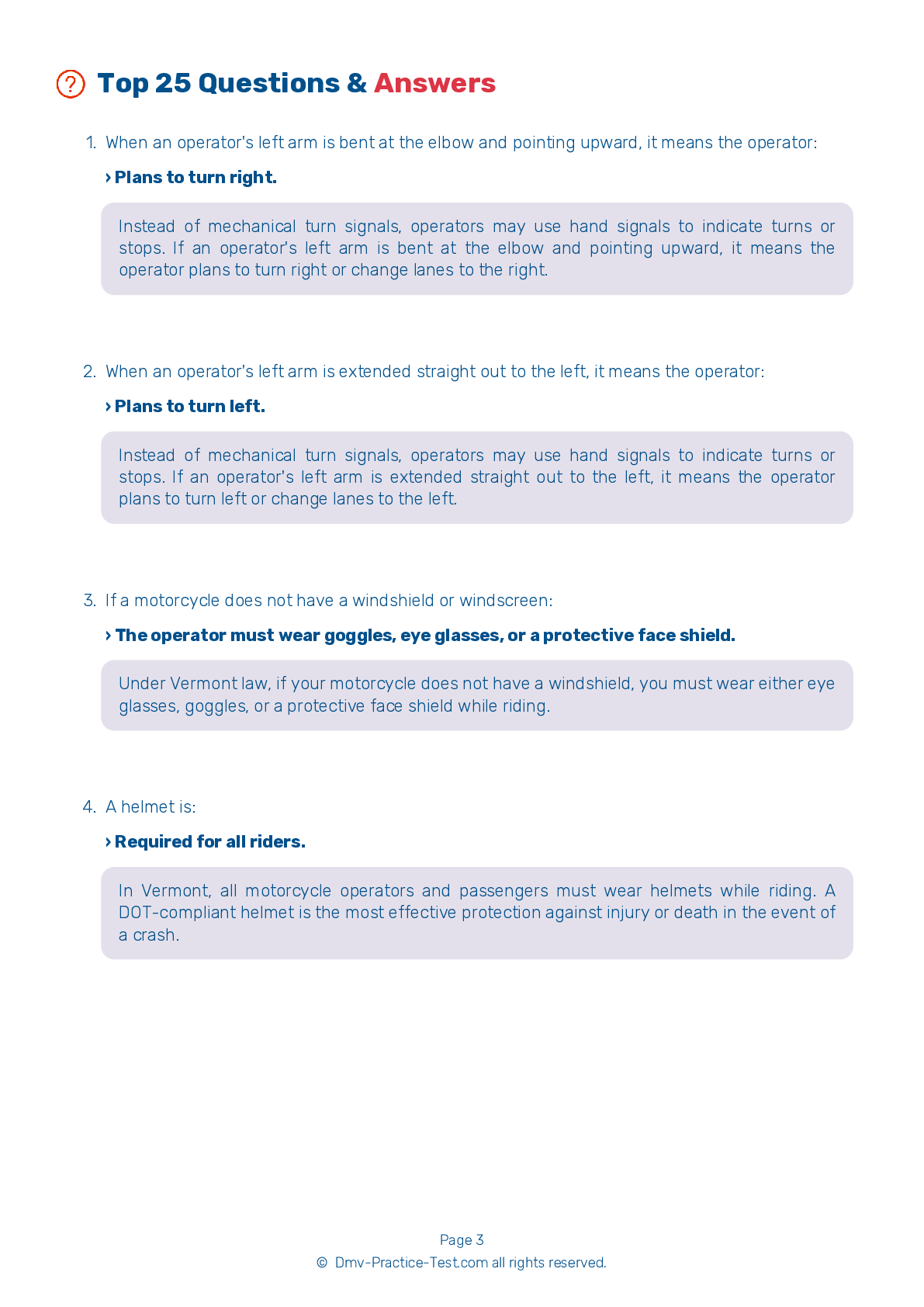Motorcycle Test | License VT 2025 | FREE Online Practice! #1 Page 4 of 4
Take this FREE motorcycle test (license in VT 2025) to check your knowledge of the road rules. To improve your results, download a motorcycle handbook online, study theory, and practice for free on our website. Still worried about how to get a motorcycle license in Vermont in 2025? Check our website for more sample tests, train as much as possible, and boost your grades!
19 . Scan the road ______ ahead of your motorcycle.
Search your path of travel at least 12 seconds ahead of your motorcycle. This will allow you to see and react to hazards before meeting them.
20 . ______ is a guarantee that another driver sees you.
Nothing guarantees that a driver sees you. It is safest to assume that if another vehicle can enter your path, it will.
21 . As you accelerate, you should:
As your motorcycle increases speed, you will need to shift up into higher gears. Shift up well before the engine RPM reaches its maximum recommended speed. As a general rule, shift up soon enough to avoid over-revving the engine, but not so soon that you will cause the engine to lug.
22 . The best way to stop quickly is to:
To stop quickly, apply both brakes at the same time. Apply the brakes firmly and do not panic if the brakes lock.
23 . Which of the following is not a type of protective riding gear?
Appropriate protective gear for motorcycling includes a jacket and pants made of leather or another sturdy material; footwear that covers and supports your ankles; and hearing protection, even if you wear a helmet.
24 . When a lead rider is bending their left arm at the elbow, pointing upward, and swinging their arm toward their helmet, it means:
Hand signals are an important part of communication when riding in groups. When the lead rider's left arm is positioned for a right turn and swinging toward their helmet, it means the riders should pull off the road.
25 . When exiting a highway while riding in a group, which riding formation should be used?
While a staggered formation is usually best for group riding, a group should switch into a single-file formation when taking curves, turning, or entering or exiting a highway.
See the exact questions that will be on the 2025 Vermont DMV exam.
99.2% of people who use the cheat sheet pass the FIRST TIME
Jeneen was tired of paying $5/gallon. She got herself a scooter that required the motorcycle license. She studyed the motorcycle test cheat sheet and passed her test the next day!
Christopher tells us how he knew nothing prior to obtaining the motorcycle study guide, and he only got one question wrong because he clicked on the wrong answer by mistake.



